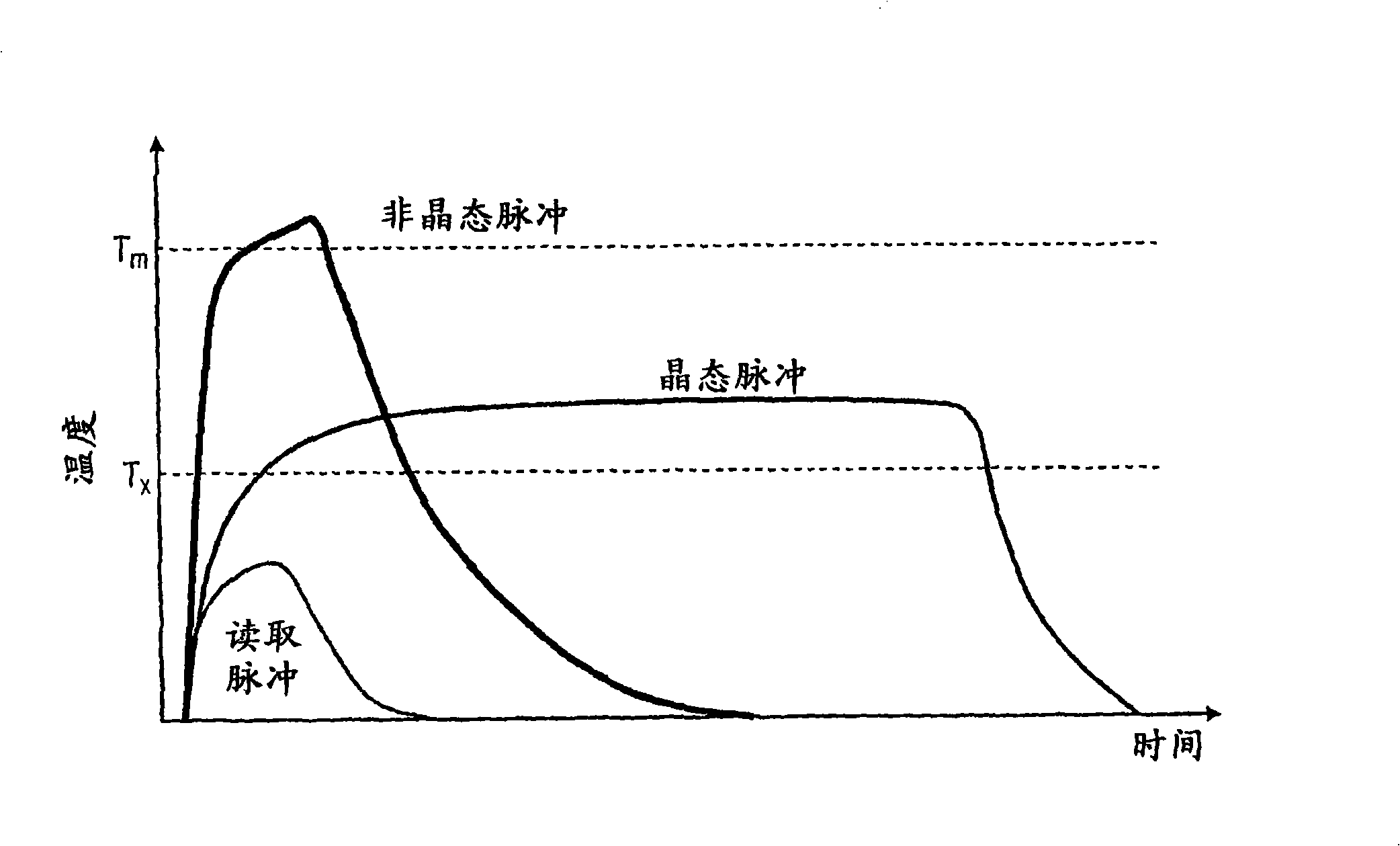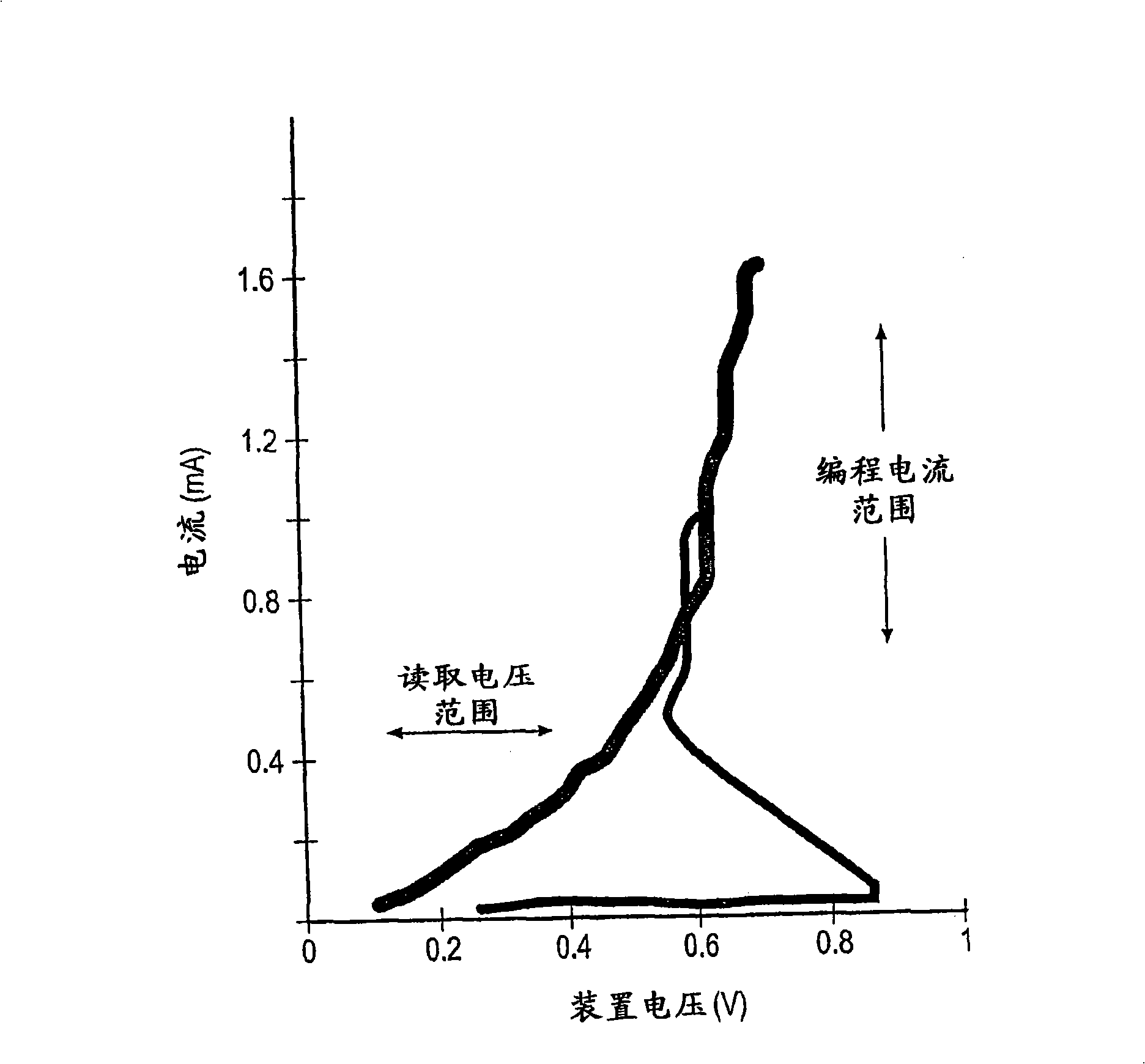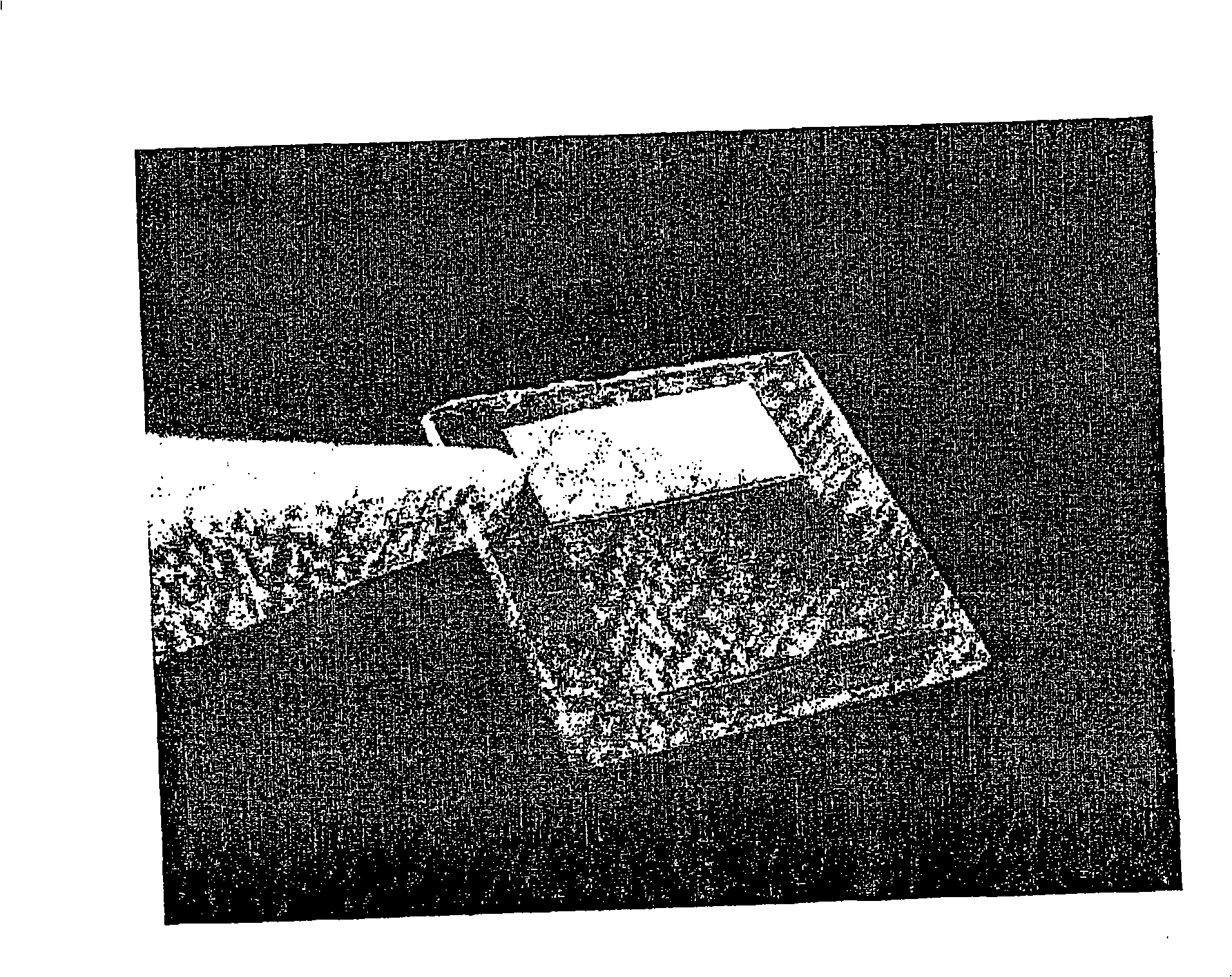Phase change memory materials, devices and methods
A phase change material, phase change storage technology, applied in static memory, read-only memory, information storage and other directions, can solve problems such as high energy consumption
- Summary
- Abstract
- Description
- Claims
- Application Information
AI Technical Summary
Problems solved by technology
Method used
Image
Examples
example 1
[0114] Example 1 - Operation of GLS Phase Alloys
[0115] In this example, we illustrate the electrical phase transition behavior of thin-film GLS alloys. The phase change alloy includes Ga, La and S, wherein the ratio of Ga to La to S (Ga:La:S) is selected to be about 1:3:6 to form the phase change alloy. More preferably, the electrical phase change alloy comprises Ga, La, S in the ratio of Gaw Lax Sy, where 5<w<10, 25<x<35, 50<y<70. More preferably, w+x+y=100%. More preferably, the ratio of Ga atoms to S atoms and La atoms to S atoms is chosen to be 2:3, and the ratio of 2Ga:3S to 2La:3S is chosen to be 1:3.
[0116] In one embodiment of the invention, the means for transferring are a first contact and a second contact. Each of the contacts abuts a roll of memory material. As used herein, a contact abuts a roll of memory material if at least a portion of the contact is in contact with the memory material.
[0117] Borosilicate microscope slides were used as substrates o...
example 2
[0121] Example 2-Electrical Phase Change Memory Cell Array
[0122] In this example, we illustrate the operation of our GLS phase change alloy as an electrical data storage element. We elucidate the electrical phase transition behavior of memory cell arrays fabricated according to a range of GLS alloy compositions. Phase change alloys include Ga, La and S, where Ga is selected and the ratio of La to S varies over a wide range. Here, the phase change alloy includes Ga, La, S in the ratio of Gaw Lax Sy, where 5<w<10, 25<x<35, 50<y<70, and w+x+y=100%.
[0123] Metal tracks were thermally evaporated onto a suitable substrate using an Edward type coating apparatus as shown in the previous examples. Since the melting point of chromium (1907° C.) is much higher than that of the above-mentioned GLS phase change alloy, chromium is used to make the track. Typically the tracks are 1mm wide, 200nm deep and 50nm long. Then, the phase-change alloy GLS was deposited on the surface electr...
example 3
[0130] Example 3 - GLS Alloy Optimization
[0131] To optimize Ga:La:S glass systems for phase transition applications, experimental studies were performed to analyze the crystallization kinetics of a series of glasses with variable Ga to La ratios. A smaller deviation from the eutectic composition results in a larger increase in crystallization time. With such a eutectic composition, conventional phase change materials can be crystallized in only 30 ns, but if only 10% deviate from this eutectic, the crystallization time increases by more than 1 μs. This illustrates the need to design phase change materials with such eutectic compositions.
[0132] Early studies on measuring glasses based on Ga:La:S eutectics had drawbacks due to the lack of phase-pure raw materials, especially phase-pure gallium sulfide. To avoid this problem, the method described in US 6,803,335 [79] was used to synthesize and test phase pure materials.
[0133] By incorporating equimolar amounts of pure...
PUM
| Property | Measurement | Unit |
|---|---|---|
| Thickness | aaaaa | aaaaa |
| Thickness | aaaaa | aaaaa |
| Thickness | aaaaa | aaaaa |
Abstract
Description
Claims
Application Information
 Login to View More
Login to View More - R&D
- Intellectual Property
- Life Sciences
- Materials
- Tech Scout
- Unparalleled Data Quality
- Higher Quality Content
- 60% Fewer Hallucinations
Browse by: Latest US Patents, China's latest patents, Technical Efficacy Thesaurus, Application Domain, Technology Topic, Popular Technical Reports.
© 2025 PatSnap. All rights reserved.Legal|Privacy policy|Modern Slavery Act Transparency Statement|Sitemap|About US| Contact US: help@patsnap.com



